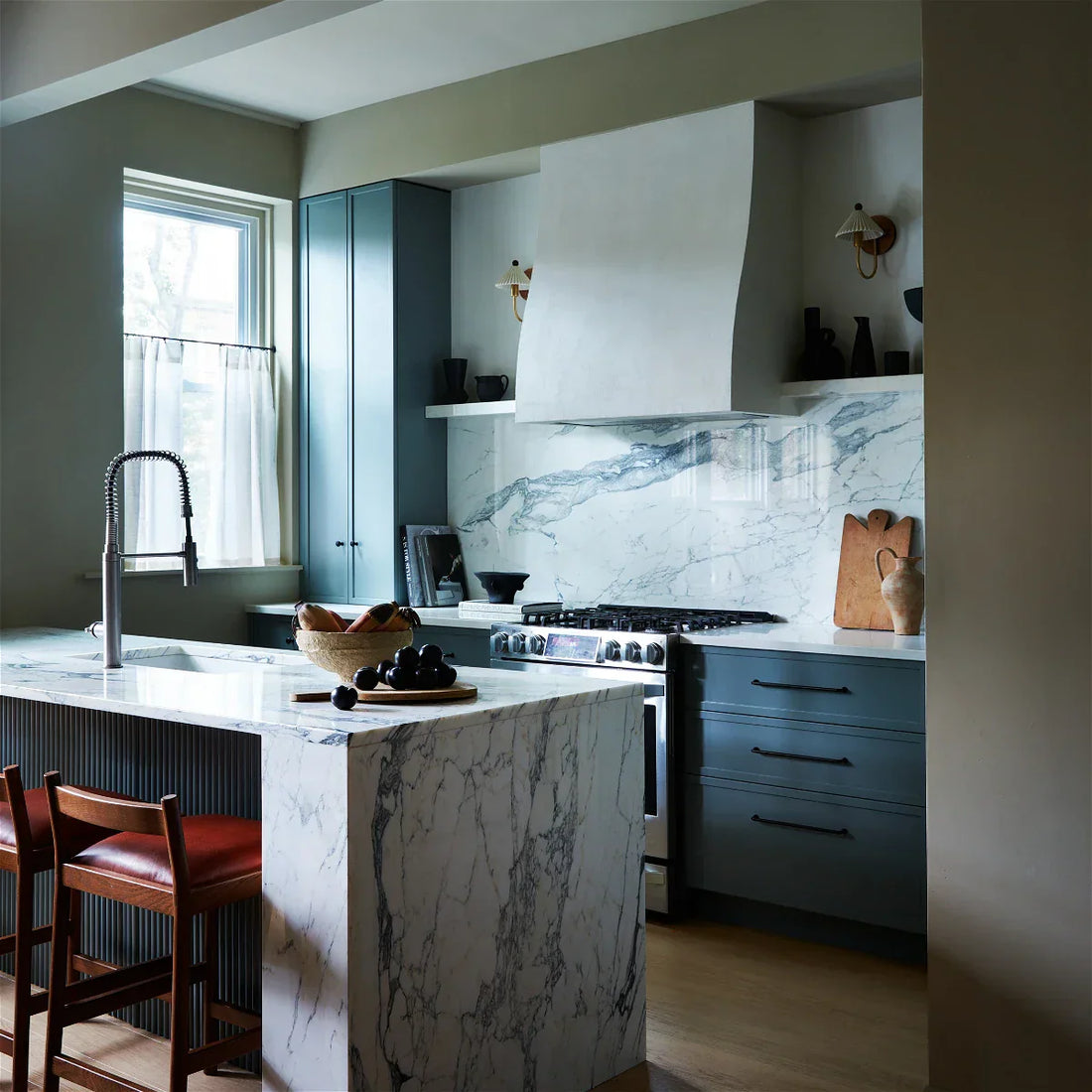
Elegance Meets Functionality: The Timeless Allure of a Marble Backsplash in Your Kitchen
In the realm of kitchen design, where style and functionality converge, the marble backsplash stands as an epitome of timeless elegance and practicality. Marble has been celebrated for centuries for its natural beauty, and when used as a backsplash material, it can elevate your kitchen to a new level of sophistication. In this comprehensive guide, we'll delve into the world of marble backsplashes, from their inherent charm and unique characteristics to the various types and installation methods available. Whether you're a seasoned design enthusiast or just embarking on your kitchen renovation journey, join us as we explore the enduring allure of marble backsplashes and how they can transform your culinary space into a work of art.
The Timeless Charm of Marble
Marble, revered for its exquisite beauty, has graced the world's most iconic structures and interiors for millennia. Its distinctive veining patterns, subtle color variations, and the sheer elegance it exudes make it a beloved choice for adding a touch of luxury to any space.
Incorporating marble into your kitchen design not only enhances its aesthetic appeal but also adds value to your home. A marble backsplash effortlessly infuses your culinary haven with a sense of grandeur and sophistication.
Advantages of a Marble Backsplash
Beyond its captivating beauty, a marble backsplash offers several practical benefits:
-
Durability: Marble is a natural stone known for its durability, making it an ideal choice for a kitchen backsplash. It can withstand the daily rigors of cooking, including heat, splatters, and spills.
-
Timeless Appeal: Marble is a classic material that transcends trends. Its timeless charm ensures that your kitchen remains stylish for years to come.
-
Easy Maintenance: Marble backsplashes are relatively easy to clean. Regular wiping with a damp cloth and mild soap is usually sufficient.
-
Variety of Choices: Marble comes in various types, each with its unique characteristics. You can choose from Carrara, Calacatta, Statuario, and more to suit your design preferences.
-
Increased Home Value: Installing a marble backsplash can enhance the resale value of your home, making it an attractive investment.
Types of Marble for Your Backsplash
Marble offers a wide range of choices, each with its unique appearance. Here are a few popular options:
-
Carrara Marble: Known for its soft gray background and subtle veining, Carrara marble is one of the most sought-after choices for backsplashes. It complements various kitchen styles, from modern to traditional.
-
Calacatta Marble: Calacatta marble boasts a whiter background with bolder, more dramatic veining. It adds a touch of luxury and sophistication to your kitchen.
-
Statuario Marble: Statuario marble is known for its bright white background and striking, bold gray veining. It's a favorite for creating high-contrast designs.
-
Bardiglio Marble: With a deep gray background and white veining, Bardiglio marble offers a rich, elegant look that pairs well with both light and dark cabinetry.
Installation Methods and Considerations
Proper installation is essential to ensure your marble backsplash looks stunning and functions flawlessly. Here are some key considerations:
-
Seam Placement: Discuss seam placement with your installer to ensure minimal visibility. A skilled installer can expertly match the veining patterns to create a seamless look.
-
Edge Profile: Choose an edge profile that suits your design style. Popular choices include square, beveled, bullnose, and ogee edges.
-
Grout Selection: The color of grout you choose can impact the overall appearance. Opt for a grout color that complements the marble to create a cohesive look.
-
Sealing: Marble is porous, so it's essential to seal it regularly to prevent staining. Your installer can recommend an appropriate sealer.
-
Layout Planning: Careful planning is crucial, especially around outlets and corners, to ensure the marble aligns perfectly and looks seamless.
-
DIY vs. Professional Installation: While some DIY enthusiasts may tackle simpler backsplash installations, it's often best to hire a professional for precise and polished results.
Maintaining Your Marble Backsplash
To keep your marble backsplash looking pristine, follow these maintenance tips:
-
Regular Cleaning: Wipe down the marble with a soft, damp cloth and a pH-neutral, stone-specific cleaner. Avoid acidic or abrasive cleaners that can damage the surface.
-
Sealing: Reapply a quality marble sealer as recommended by your installer to prevent staining. The frequency of sealing depends on the type of marble and usage.
-
Blot Spills Promptly: Marble is susceptible to staining, so blot any spills immediately to prevent absorption.
-
Avoid Harsh Cleaners: Steer clear of harsh chemicals or abrasive scrubbers, as they can dull or scratch the marble surface.
-
Protect Against Heat: Use trivets or heat-resistant mats to protect the marble from hot pots and pans.
-
Regular Inspections: Periodically inspect the backsplash for any signs of damage, such as cracks or chips, and address them promptly.
A marble backsplash isn't just a functional element in your kitchen; it's a statement of timeless elegance and enduring beauty. Its natural charm, durability, and the variety of choices it offers make it a coveted addition to any culinary space.
Whether you opt for the classic allure of Carrara marble or the luxurious beauty of Calacatta or Statuario, your kitchen will be transformed into a work of art. Remember that proper installation and maintenance are key to preserving the pristine look of your marble backsplash, ensuring that it continues to captivate and impress for years to come. Embrace the elegance of marble and let it become the centerpiece of your kitchen's design, blending aesthetics and functionality seamlessly.
